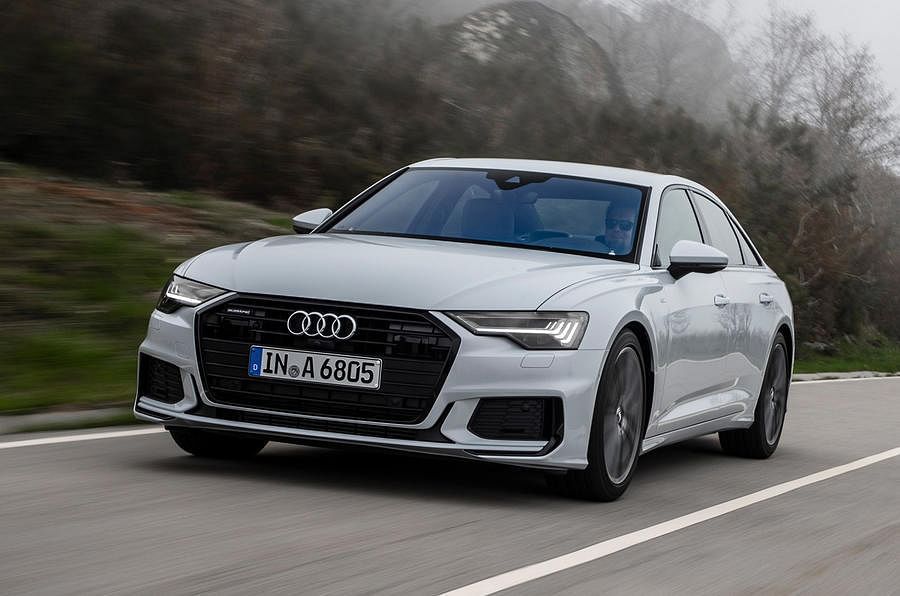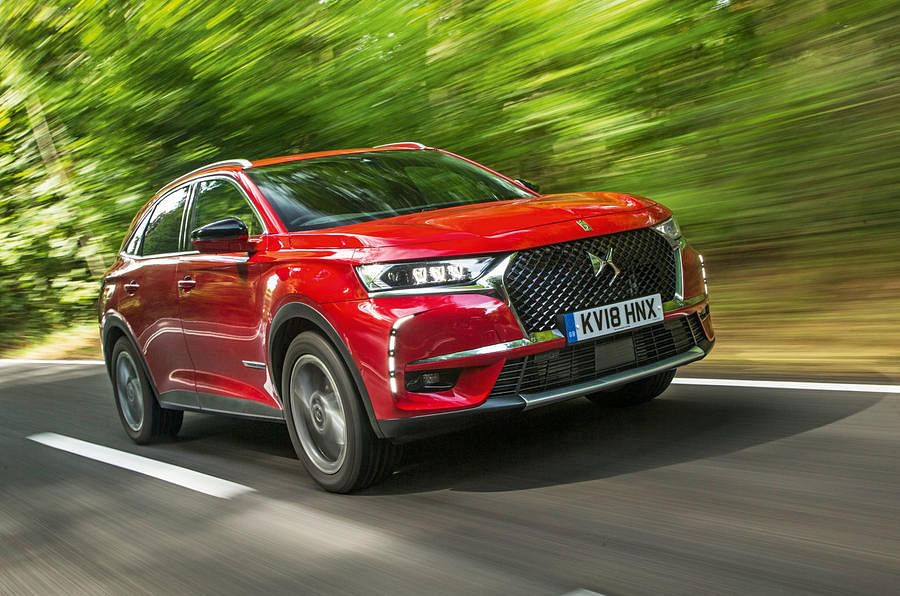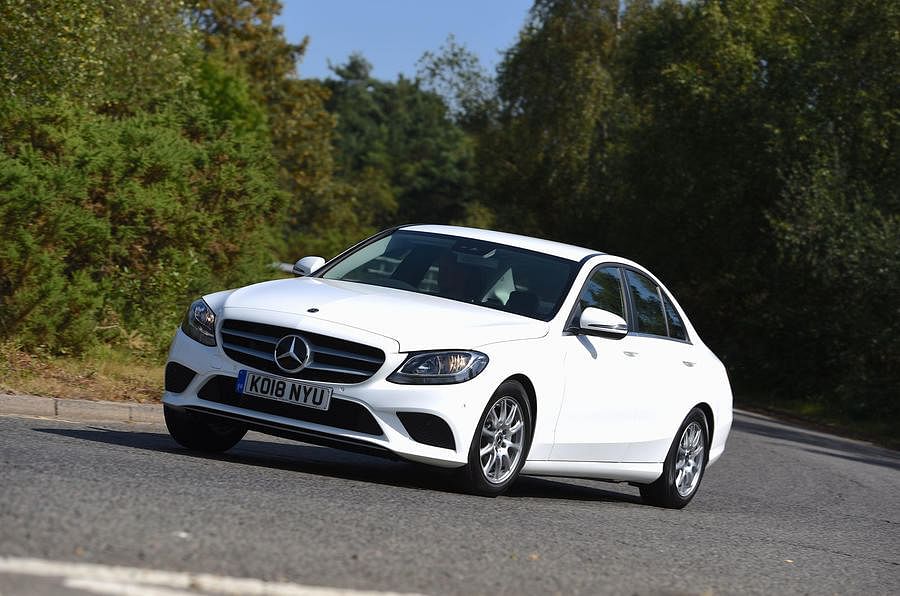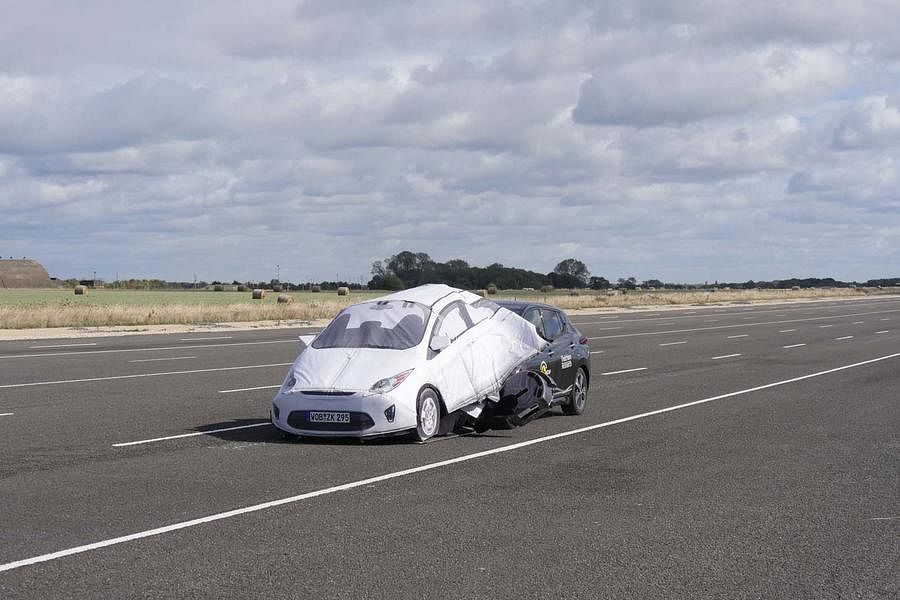Euro NCAP tests automated driving, 'autonomous’ driving assist tech causes dangerous confusion
New study shows assist systems are being misinterpreted by buyers, while Euro NCAP launches assessment of the technology.
The UK's Thatcham Research has released research suggesting drivers are being “dangerous” false impressions of what the latest automated driver assist systems are capable of.
The British safety and crash testing body has also teamed up with Euro NCAP to test 10 cars, including the Audi A6, DS7 Crossback, Ford Focus, Mercedes-Benz C-Class, Nissan Leaf, Tesla Model S and Volvo V60, fitted with common systems made standard on many cars today, including autonomous emergency braking and lane keep assist.
Both organisations have identified confusion among motorists over what these technologies are capable of, with a study claiming 71% of drivers globally and 53% of drivers in the UK believe you can purchase a full self-driving car today. Thatcham believes that improper marketing by carmakers, using terminology such as “semi-autonomous” or “self-driving”, is fuelling the misinformation.
>
Matthew Avery, Director of Research at Thatcham, commented: “Some carmakers are designing and marketing vehicles in such a way that drivers believe they can relinquish control. Carmakers want to gain competitive edge by referring to ‘self-driving’ or ‘semi-autonomous’ capability in their marketing, but it is fuelling consumer confusion. This is exacerbated by some systems doing too much for the driver, who ends up disengaged”.

“Our message is that today’s technology supports the driver. It is not Automated Driving and it is not to be relied upon at the expense of driver attentiveness. The driver is in control and must always remain alert. If used correctly Highway Assist systems will improve road safety and reduce fatalities, but they won’t if naming and marketing convinces drivers that the car can take care of itself.”
Since the study has been released, Nissan has confirmed to the company that it will start calling these features “assist systems” and will stop using the words “autonomous” or “automated” in its literature. Volvo has also said it will stop using the phrase “semi-autonomous” in its marketing, admitting there is room for confusion
Thatcham’s testing (below) also revealed that cars supposedly using the same features were inconsistent in their responses, with one not responding at all. Euro NCAP has announced that it will be grading the technology by 2020 as part of its overall safety rating for new cars.
Q&A with Matthew Avery, director of research at Thatcham Research
What is your main concern about today’s driver assist systems?
"If they’re used properly, none of them are a big concern. If you don’t over-rely on any of them, there isn’t a serious concern. But people can look at the way it's marketed, the way it’s sold, and can look at what it appears to communicate to the driver. All of that can convince the driver the system is more capable than it actually is. We think the BMW and the Nissan don’t support the driver enough, and can lead the driver into questioning is it working? And what’s the point?
The Tesla appears to do a lot more than it should do – it’s very competent, it’s a very good system. However, it probably does too much for the driver – it doesn’t want the driver to interact with it. During the pothole test, the Tesla resists you, so you end up fighting the steering until it eventually lets go – it leads the driver into thinking it's more capable than it actually is."
Should manufacturers be doing more to educate buyers about these systems?
"Manufacturers are beginning to move the right way - but we don’t like terminology such as 'autopilot', and we want a system that is very clear and cooperates with the driver. We want to keep a clear blue line between ‘assisted’ and 'automated'.
"Tesla’s over-the-air updates are very good - since we’ve started testing the system the performance seems to be getting better. These systems make driving safer than it’s ever been - but don’t think they’re going to do the driving for you. That message isn’t getting through."
Does the performance of these systems vary in different weather conditions?
"AEB systems are dependent on the weather – these systems are very robust. There will be system degradation in bad weather – but it’s not horrendous. One thing that we do find is that some of the sensors can be blocked, sometimes, well before the driver gets a warning. The driver doesn’t always get the feedback they should that the system is not working."
The Thatcham driver assist test
The tests developed so far will form the basis for the tests that will be introduced into the Euro NCAP rating system in 2020. They will include a ‘desk-based’ rating, where the team judges how manufacturers are selling drive assist systems to consumers.
Practical testing includes a rating of how well these systems are able to read white lines on the road, and how they can take on board information given on motorway gantries, such as speed limits or hazard warnings.
At the test track, researchers have devised three tests. The first is a pothole test, where the car’s ‘lane keep’ steering assist is activated and the driver has to attempt to steer around a pothole in the road before hitting it. The second is an S-bend test, where the team sees how long the system can maintain steering assistance through a series of bends with and without white lines on the road, and with no hands on the wheel. The final test looks at the automatic emergency braking systems, seeing if the cars stop behind a stationary vehicle at more than 40mph / 64kph.
The highlights from Thatcham and Euro NCAP's findings on the key models are below, and you can read more at this link:

Audi A6: "Adaptive Cruise Assist on the Audi A6 gives the driver a moderate level of support while maintaining the impression of the driver being in control with the car assisting them. The name “Adaptive Cruise Assist” clearly indicates that the system is a driver-assist system, not an autonomous one, and is not readily misunderstood. Overall, the Audi system is balanced with little risk of the driver over-reliance on the system."

DS 7 Crossback: "Connected Pilot on the DS 7 Crossback gives the driver a low level of support, therefore maintaining the impression of the driver being in control with the car assisting them. The name “Connected Pilot” does not clearly indicate that the system is a driver-assist system, and could be easily misunderstood.
The limited scenarios tested show that the system is only assisting In the longitudinal scenarios, the DS 7 Crossback shows a moderate level of support in the slower-moving and braking car scenarios. When approaching a stationary car, and in the ‘cut-in’ and ‘cut-out’ scenarios, the system offers no support at all. Overall, the DS system needs the driver to be primarily in control with little risk of the driver becoming over-reliant on the system."

Ford Focus: "Adaptive Cruise Control with Stop&Go, Lane-Centring and Speed Sign Recognition as part of Co-Pilot360 on the Ford Focus gives the driver a high level of support while maintaining the impression of the driver being in control with the car assisting them. The name “Co-Pilot360” indicates that the system is a driver-assist system, not an autonomous one, and is not readily misunderstood. Overall, the Ford system is balanced with little risk of the driver over-reliance on the system."

Mercedes-Benz C-Class: "Active Distance Assist DISTRONIC with Active Steering Assist on the Mercedes-Benz C-Class gives the driver a high level of supportwhile maintaining the impression of the driver being in control with the car assisting them. Active Steering Assist provides subtle steering support resulting in a good balance between the driver and the system in the S-bend scenario. In the absence of lane markings or other vehicles to act as a guide, Active Steering Assist will change to a passive modeand will resume assistance when clear lane markings are detected.Overall, the Mercedes-Benz system is balanced with little risk of driver over-reliance on the system."
Pothole test: The steering assist lets the driver steer around the pothole and maintains assistance once they have done so.

Nissan Leaf: "ProPILOT on the Nissan LEAF gives the driver a moderate level of support while maintaining the impression of the driver being incontrol with the car assisting them. ProPILOT provides subtle steering support resulting in a good balance between the driver and the system in the S-bend scenario. In the absence of lane markings or other vehicles to acts as a guide, ProPILOT will change to a passive mode and will resume assistancewhen clear lane markings are detected. The name “ProPILOT” does not clearly indicate that the system is a driver-assist system and could be misunderstood. The limitedscenarios tested show that the system provides assistance only"
Rear end shunt test: The car did not sense the stopped car at all and drove into it without braking (above)."

Tesla Model S: ‘Autopilot’ on the Tesla Model S gives the driver a high level of support with the vehicle primarily in control in both braking and steering scenarios. The name “Autopilot” implies a fully automated system where the driver is not required. However, the limited scenarios tested clearly indicate that is not the case, nor is such a system legally allowed. Overall, the Tesla system is primarily in control with a risk of driver becoming over-reliant on the system”.
Pothole test: the car’s steering wheel fights against the driver while you try to drive around a pothole and then deactivates, providing no assistance. This encourages the driver to let the car be in control, which is potentially dangerous.
S-Bend test: The car steers itself around the bends where there are white lines but stops doing so when the white lines end. At a motorway slip road it doesn’t recognise the road situation and drives the car onto the hard shoulder, assuming it is the left-hand lane.
Rear-end shunt: The car senses the stationary vehicle well in advance and applies the brakes early, gently decelerating to a stop."

Volvo V60: "Pilot Assist on the Volvo V60 gives the driver a moderate level of support while maintaining the impression of the driver being incontrol with the car assisting them. The name “Pilot Assist” clearly indicates that the system is a driver-assist system, not an autonomous one, and is not readily misunderstood. Overall, the Volvo system is balanced with little risk of driver over-reliance on the system."
Desk test: ‘Pilot Assist’ is a better name because it doesn’t suggest the car is in control.
S-bend test: the system warns the driver that it’ll deactivate 15 seconds after they let go of the steering wheel, and does this 15 seconds later alongside deactivating the cruise control, bringing the car to a gentle stop."
RELATED ARTICLES
BYD selects Voestalpine as steel supplier for its Hungarian plant
The announcement of the Austrian steelmaker as a supplier demonstrates BYD’s strategic plan to source from high-quality,...
Skoda lays foundation stone of state-of-the-art paint shop at Mlada Boleslav plant
The new paint shop, which will begin operations in 2029, will have a capacity of up to 1,600 vehicle bodies a day and wi...
Horse Powertrain reveals integrated hybrid powertrain
Unit combines Horse Powertrain’s new 1.8-litre ‘HR18’ engine, its DB45S transmission, a 1.4kWh battery, and 50kW 5DH mot...





 18 Oct 2018
18 Oct 2018
 9031 Views
9031 Views





 Autocar Professional Bureau
Autocar Professional Bureau




